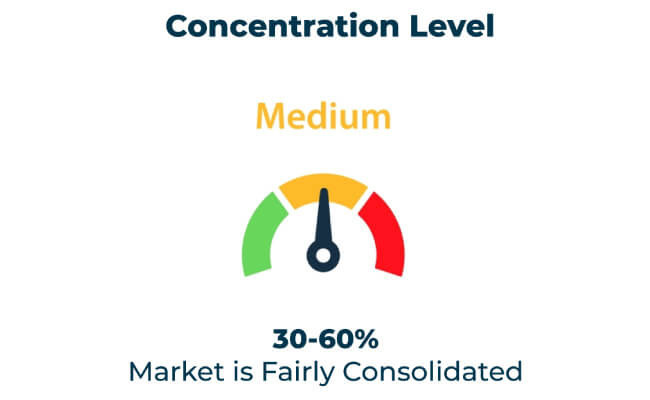The global animal theme parks industry has been witnessing robust expansion as consumer demand for immersive wildlife experiences continues to grow. Market leadership is highly consolidated, in which SeaWorld Parks & Entertainment, Walt Disney’s Animal Kingdom, and Chimelong Safari Park cover almost 50% of the market. These brands capitalize on nations-of-the-world animal habitats, next-level conservation efforts and high-tech entertainment to generate visitation and revenues.
Regional competitors offer unique experiences around conservation, education, and family entertainment, including Everland Zoo (South Korea), LoroParque (Spain), and Singapore Zoo, and as a group they represent approximately 35% of the market. The Ark Encounter and Australia Zoo dominate 10% of the market share, with niche operators for luxury wildlife experiences taking up another 10%, while 5% are held by independent operators of community-focused amusement and boutique safari parks.
Explore FMI!
Book a free demo
| Key Players | Market Share (%) |
|---|---|
| SeaWorld, Disney’s Animal Kingdom, Chimelong Safari Park | 50% |
| Regional Competitors ( Everland Zoo, Loro Parque , Singapore Zoo) | 35% |
| Niche Wildlife Theme Parks | 10% |
| Independent Operators | 5% |

A new tech-assisted breed of wildlife entertainer Leading operators such as SeaWorld and Chimelong Safari Park are actively improving animal welfare with AI-powered management. To this end, SeaWorld has deployed more sophisticated monitoring machinery for marine animal well-being and Chimelong Safari Park has visited to implement AI-based visitor interaction tools to boost guest learning.
Fractional ownership models are emerging as well, taking the form of luxury conservation parks like The Ark Encounter and Australia Zoo, both of which promote exclusive membership programs that offer behind-the-scenes access to their conservation initiatives. These programs are targeting high-net-worth individuals (HNWIs) looking to experience wildlife conservation up close and personal.
Green global eco-tourism networks such as the World Association of Zoos and Aquariums (WAZA) and the Conservation Centers for Species Survival (C2S2) are transforming the industry through focused links between travelers and ethically managed wildlife parks. They reward visitors for choosing sustainable animal experiences with loyalty incentives and exclusive educational programs.
Luxury wildlife resorts such as Singita and SabiSabi Private Game Reserve offer affluent travelers personalized safaris and privileged wildlife conservancy packages. Singita reports new private wildlife photography retreats, and SabiSabi combines luxury safari experiences with direct conservation funding projects.
Eco-parents say destinations such as Disney’s Animal Kingdom and Everland Zoo cater to eco-conscious families with interactive wildlife exhibits. Everland Zoo has a junior zookeeper program, and Disney’s Animal Kingdom is developing more conservation education programs aimed at children.
Animal conservation lodges like Giraffe Manor and The Green Safari Company provide sustainable, nature-based co-living experiences for remote workers and digital nomads. Giraffe Manor marries high-end stays with wildlife immersion, and The Green Safari Company offers sustainable safari retreats with co-working spaces in biodiversity hotspots.
Animal theme parks are increasing in popularity, expanding into new areas due to the growth of tourism and awareness of conservation:
SeaWorld, Disney’s Animal Kingdom, and Chimelong Safari Park collectively hold about 50% of the market.
Specialized high-end wildlife parks and safari experiences account for 10% of the market.
Regional operators like Everland Zoo, Loro Parque, and Singapore Zoo represent 35%, focusing on conservation-based attractions.
Winning Strategies in Social Media and Destination Market Share Analysis: A Competitive Review
Winning Strategies in the Global Tourism Industry Loyalty Program Sector: A Competitive Review
Winning Strategies in the Global Spa Resorts Industry: A Competitive Review
Surrogacy Tourism Industry – Competitive Analysis and Market Share Outlook
China Destination Wedding Market Insights – Growth & Forecast 2025-2035
Tourism Industry Loyalty Programs Sector Analysis by Program Type by Traveler Profile by Region - Forecast for 2025 to 2035

Thank you!
You will receive an email from our Business Development Manager. Please be sure to check your SPAM/JUNK folder too.